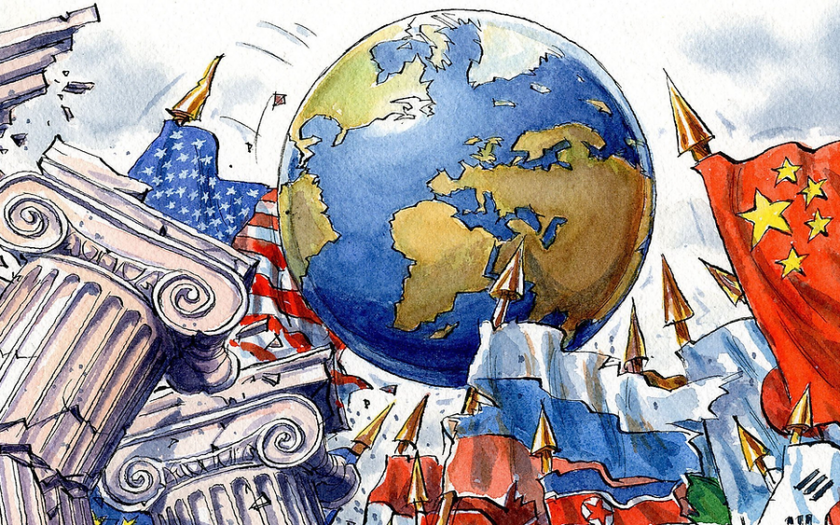This writing gives an overview of the main points of the Edx course The Superpower Grand Strategies – Winning the Globalization Game by Prof. Thomas P.M. Barnett, including admin’s extra personal views and comments.
The world’s shifting geopolitical landscape will determine how superpowers will compete with one another for political influence and economic standing this century. Due to climate change and demographic collapse there will be a change from a global East/West structure to a new North/South structure.
After 1945, America’s and its allies historical approach to encouraging deep economic interdependency among its Eurasian member states, was by enabling the freest possible traffic of people, goods, investments, trade, and ideas . With the collapse of the Socialist camp and the Cold War’s end in 1990, the West-led mini-global economy rapidly became a true global economy or what we now describe as globalization. So first, it focused on resurrecting Europe and Japan. Later the global economy placed its focus on China then to the SE Asia’s Tigers and later to India. The future focus may be on the Middle East and Africa.
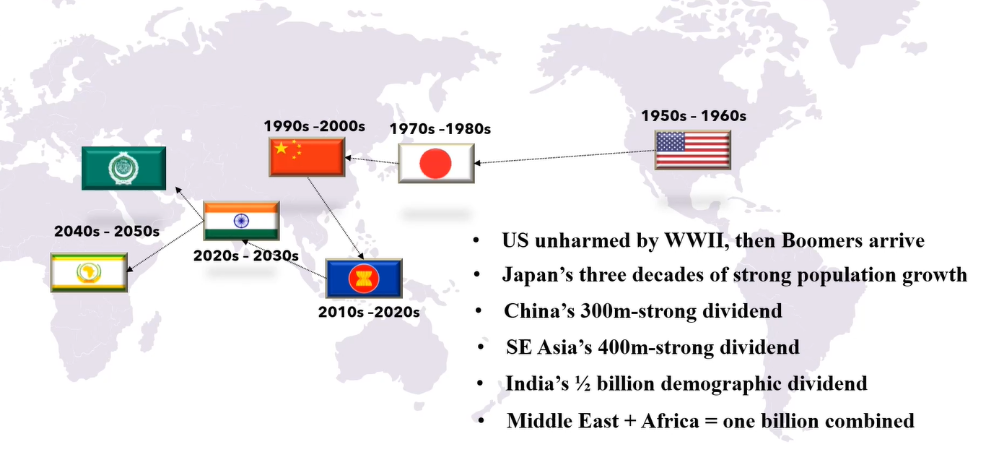
An East-West orientation to a north-south orientation will take place due to the following facts:
- Climate change will impact the global south with far more damage than the global north, triggering northward flows of climate refugees.
- Demographic aging is occurring across the global north, while the global south still experiences rapid population growth, likewise triggering northward migrant flows.
- The global majority middle class is largely centered in the Global South, meaning the Global North will be highly incentivized to seek further trade and development integration with these lower-latitude states
Climate change is rearranging, remapping our natural world. In a competitive global economic landscape, it is illogical to expect aged societies to perform as well as younger ones. It’s not impossible, it’s just not likely. An economic shift takes place from aging societies to younger socities:
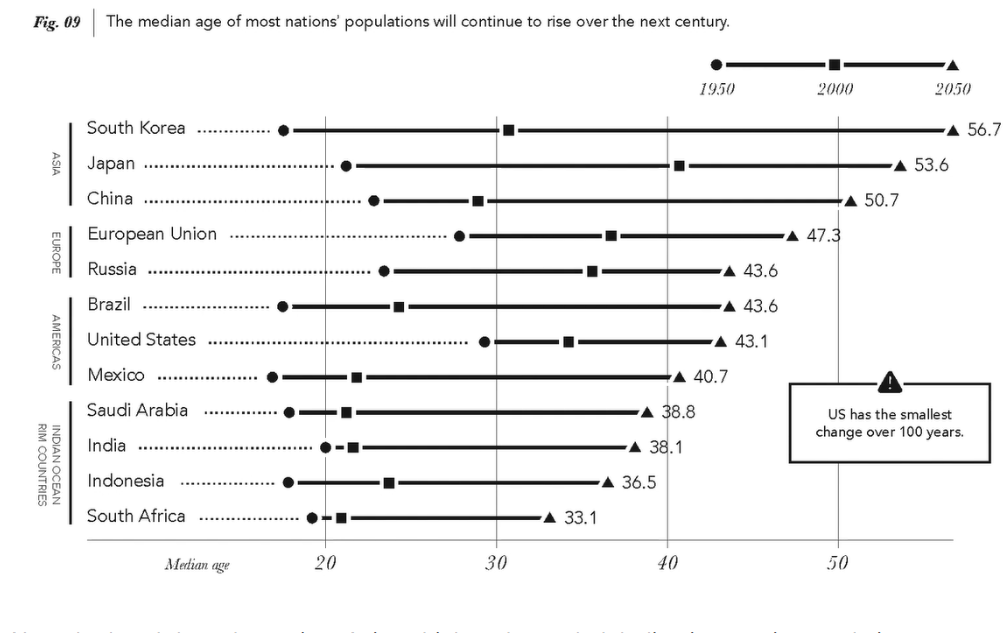
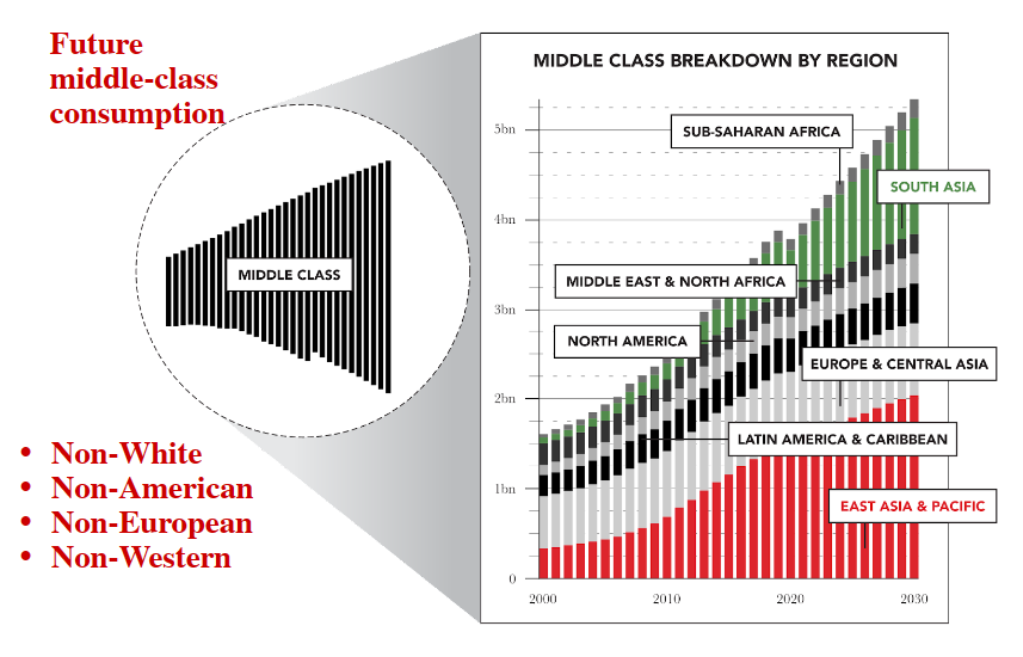
The bulk of middle class expansion this century unfolds across East and South Asia, subsequently followed by the Middle East and Africa.
Finally, each iteration of this global development sequence appears to unfold more rapidly than the last. Japan’s reign was shorter than America’s, China’s shorter than Japan’s, SE Asia’s shorter than China’s and so on.
The aging North should consider progressive economic and political integration with the still youthful and high-growth-capable south. But how will the south/North shift take place. The middle class wants stability, certainty, and a sense that their needs are being suitably prioritized by the government. Democracies thrive when there middle class feels safe and happy, and they are threatened or even collapse when the oppositive conditions and emotions prevail. The following global democracy division will then appear:
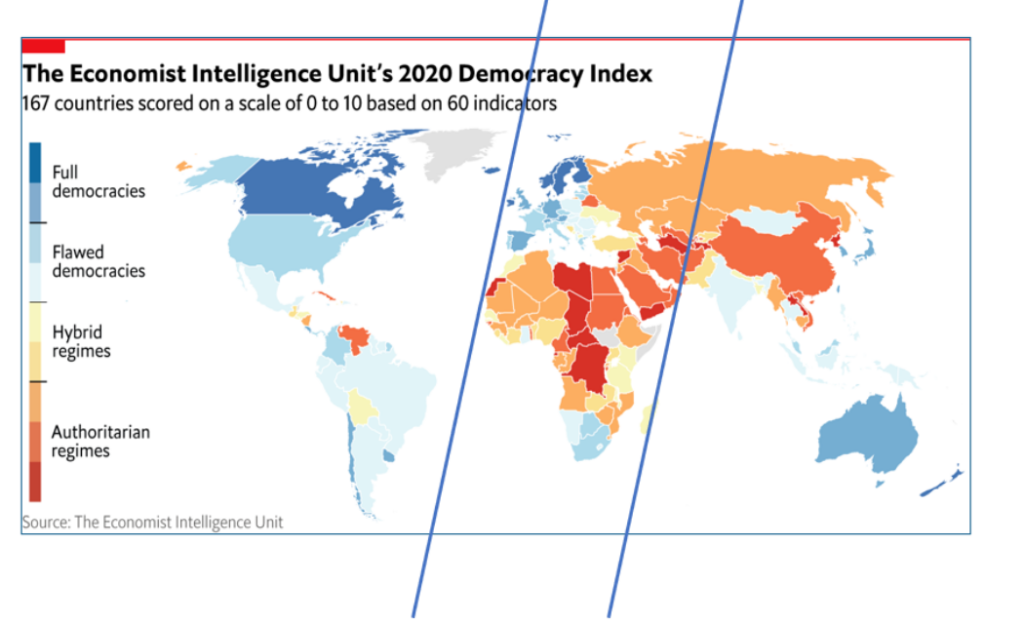
There is: the (US-led) western hemisphere, the (Europe-led) Eur-African hemisphere and the (China and India-led) Asian hemisphere.
The Chinese Dream is not open for non-Chinese, nor is the Indian Hindu Miracle. However, anyone can become a European, and anyone can become an American. And that is a very powerful brand quality
Russia doesn’t really have a true model of North-South integration but rather one of fighting any Western version of North-South integration
China’s north-south integration model is more ambitious and concrete than Russia’s. China seeks to create economic, political, and security safe zones across the world, linking them up in secure supply and value chains
India is a special case, as it is nowhere near acting as a global integrating force at this time, being so focused on engineering its own, China-like rise within the system. India’s efforts to forge its own regional security alliances and economic value chains.
The EU and its model of state integrate along political and economic and military lines (via NATO). This model of state accession is arguably the best and most successful example of soft power and successfully exploited brand appeal that the world has yet seen. The EU basically mandates that candidates “europeanize” themselves by adopting the EU body of laws.
Superpowers such as the US, the European Union, Russia, India, and China will all compete for influence and market access. This may give conflicts.
America approaches international conflicts with a mindset best likened to poker. We judge our hand (cards held), estimate our opponent’s, then either call (match their bet), raise (surpass it), or fold (withdraw). When the Soviet Union collapsed, America went into overdrive with its market-making role, assuming the mantle of the World’s policeman. That crashed in Iraq and Afghanistan during America’s global war on terror.
Russians view international conflict as chess, a game that appeals to their mathematical prowess. In chess, a player moves after calculating (a) the threat at hand, (b) their own weaknesses, (c) their opponent’s weaknesses, and finally (d) their best opportunity to exploit any perceived advantage presently enjoyed.
China quietly pursues a different contest across a wider playing field. The best game analogy here is the Chinese board game known as go. Go is a logical grand strategy for a nation advantaged in resources (people, money) because it rewards persistence while eliminating randomness. It is perfect when playing against an unwitting, inattentive, and erratic opponent. China’s approach is very bottom up compared to America’s top-down approach. Viewing its homeland as inherently unsafe, due to its historical vulnerability to civil wars and invasions, China seeks to create safe zones both throughout its homeland and the larger world. By laying down these go stones in the form of belt and road initiative deals, China seeks to project power by first establishing facts on the ground – safe zone by safe zone. China’s focus on the board means it seeks to extend both its trade and its security networks and relationships as broadly across the global playing field as possible.China’s bottom up approach is one of security-enhancements – a non-zero sum dynamic with both sides feeling better the more security each side has. China’s not interested in military interventions but it is VERY interested in far more discrete police interventions.
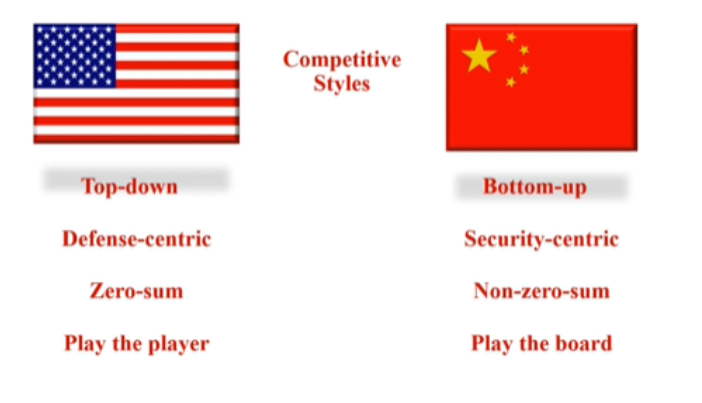
State-on-state wars remain rare in the current global system. Globalization remains a phenomenon in which mass violence remains concentrated within states – not between them. An additional and important aspect of global security to consider: the fear of nuclear proliferation. When looking at the three global vertical slices: the Western Hemisphere on the left, Eur-African center slice in the middle, and the Asian slice to the right,there are growing stresses in each: most notably: climate devastation to the south, forcing northward migrations, second, rapid demographic aging across the north, creating angry populism and anti-immigrant fascist impulses, and third, the growing endangerment of that global majority middle class’s developmental trajectory amidst these two colliding forces of climate and demography.
The superpower in each vertical global segment will be increasingly forced to manage their latitudinal slice according to the so called Boyd’s OODA loop model, this comprises four steps:
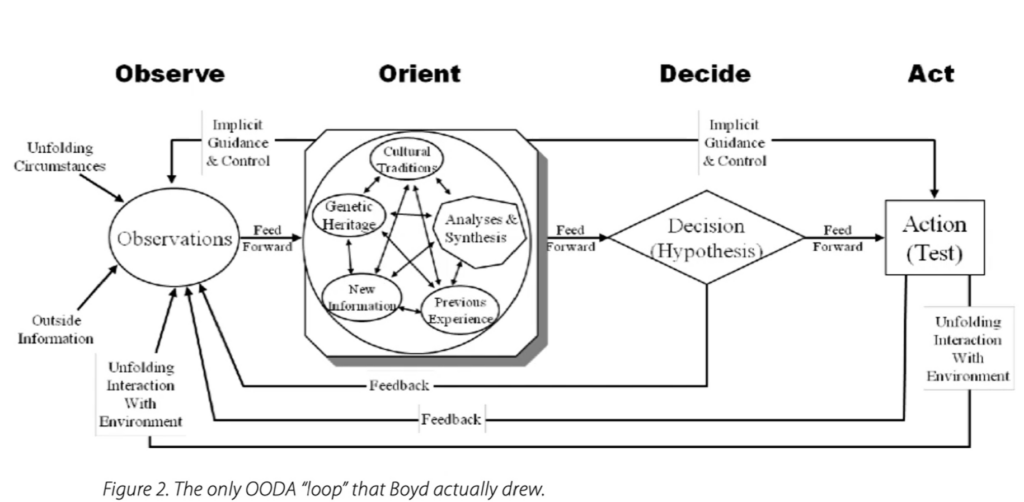
- Observe the global environment situation event or action
- Orient oneself within that observed dynamic or environment
- Decide how best to respond and
- Act on that judgment
The western hemisphere is decidedly most geopolitically calm, to include no border changing events for the US across a long time period. In terms of sheer military power as reflected in national defense budgets, there is no real comparison, as the US alone outspends the next 10 military powers. The West is unusually blessed, with 13% of the world’s population armed with 45% of the world’s freshwater supply. The West feeds the rest – in a fashion that creates profound geopolitical dependencies. The third resource advantage is captured by displaying regional positive oil and natural gas production versus consumptions. The West is far more uniformly democratic than the other two slices, which features islands of democracies swimming in a sea of authoritarian regimes.
The world is heading into a half-century or more of great geopolitical turbulence, in which geopolitical orphans will be created in great numbers – both as failed states and as vast waves of climate migrants. For a superpower to survive these dynamics, it must become an integrating force not just within its borders but beyond them. The great danger that lies ahead for America is found in its burgeoning White Christian nationalist political movement that most definitely chooses color over country, believing that the loss of White and Chrsitian identity signals the necessary end of the country’s democratic experiment – meaning, this movement will readily embrace authoritarianism to forestall the end of Whites’ dominant identity and thus its privileged status within American society. But America has the advantage that the refugees coming from South America have a comparable (Christian) cultural background; this is not the case for Europe, because the immigrants from Africa mostly have a Muslim background.

